Search Results

Glenis
The body is ultimately wise. Through this most recent medical ordeal, I learned to listen to what my body was telling me. In 2018, I felt symptoms above and beyond the fibromyalgia ailments that I had been plagued with for 25 years. I had unusual inflammation despite eating healthy and walking on a regular basis. I developed an unrelenting throb of pain in my lower back. My internal medicine doctor at the time dismissed my complaints.
Diagnosis
Having the correct diagnosis is important for getting the right treatment. Hodgkin lymphoma (HL) may be difficult to diagnosis. You may want to get a second medical opinion by an experienced hematopathologist before you begin treatment. A hematopathologist is a specialist who studies blood and bone marrow cells and other tissues to help diagnose diseases of the blood, bone marrow and lymph system.
Autologous Stem Cell Transplantation
In autologous stem cell transplantation, the procedure uses the patient’s own stem cells for the transplant. The stem cells are collected from the patient in advance and are frozen. After the patient undergoes high doses of chemotherapy, either with or without radiation therapy, the stem cells are then returned to the body. This type of transplant is often used to treat blood cancers such as Hodgkin lymphoma, non-Hodgkin lymphoma and myeloma.
Diagnosis
An accurate diagnosis is one of the most important aspects of a person’s care. Obtaining a precise diagnosis will help the doctor
- Determine the MDS subtype
- Estimate how the disease will progress
- Determine the most appropriate treatment
Since MDS can be a difficult disease to diagnose, you may want to get a second medical opinion by an experienced hematopathologist before you begin treatment.

Jessica
Last spring, I was a normal college junior. I had just returned from spring break in the Caribbean with my best friends, and my biggest problem was party planning my 21st birthday that was coming up.
I had a bump on my neck for a few months at that point. I visited several doctors who all assured me it was just a normal swollen lymph node and nothing to be concerned about. My family decided to fly me home for a weekend to get checked out by my pediatrician who we trust. My pediatrician took the lead for further testing.
Lena
In 2018, I had what I thought was a urinary tract infection (UTI). It ended up being a tumor in my bladder the size of a lime. It turned out to be diffuse large B-cell non-Hodgkin lymphoma (DLBCL). I ended up doing six rounds of R-CHOP chemo with Neulasta® and a month of radiation afterward. I am grateful to be alive but do have lingering side effects with chemo brain/memory loss, neuropathy in my hands and right arm, loss of taste for certain foods/drinks, and weight gain from prednisone.
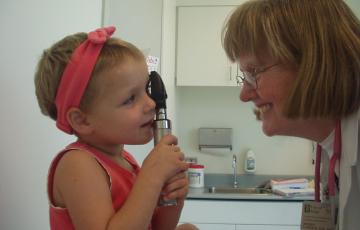
Kelly
In 2001, I was diagnosed with T-cell acute lymphoblastic leukemia (T-ALL) at age three and survived thanks to three and a half years of intense treatment at the City of Hope Los Angeles. I am now 25 years old, a college graduate, and working for The Leukemia & Lymphoma Society (LLS), hoping to give back to those who helped save my life. I have volunteered with LLS since 2009 after being chosen as their "Girl of the Year" to inspire candidates to raise money for blood cancer research. In 2017, I became a candidate for the Student of the Year campaign raising over $60,000 in seven weeks.
Megan
At 31, I was diagnosed with acute myeloid leukemia (AML). It all started with what I thought was a cold or maybe COVID. I kept working, brushing off the symptoms as something minor. But things got worse. I had a persistent cough and unexplained bruises, and I felt constantly out of breath. When I lost part of the vision in my right eye, I knew something was seriously wrong, but without insurance, I hesitated to seek help.
Allogeneic Stem Cell Transplantation
Allogeneic stem cell transplantation involves the use of stem cells from someone other than the patient. The donated stem cells can come from either a person related or not related to the patient.
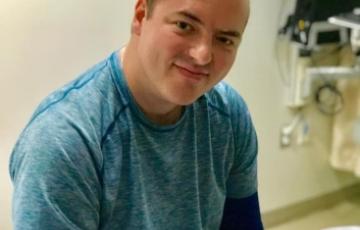
Blaine
Everything happens for a reason, even cancer. I am thrilled to say I just walked out of the hospital doors at Memorial Sloan Kettering Cancer Center after receiving the news that I have achieved a complete and total REMISSION. Leukemia pushed me to death’s door more than once, and it taught me more than I could ever dream of knowing about myself and life in general.
Drug Therapies
In the past decade alone, new drugs and new uses for existing drugs have greatly improved rates of cure or remission for patients of all ages. Newer "targeted therapies" and "risk-adapted therapies" have resulted in higher overall response rates and decreased side effects. More than 50 drugs of different types are now being used singularly or in combination to treat blood cancers.
Blood cancer treatment often includes one or a combination of:
Diagnosis
While certain signs and symptoms may indicate that a person has MF, a series of tests are needed to confirm the diagnosis. It is important to have an accurate diagnosis, as it helps the doctor to:
- Estimate how the disease will progress
- Determine the appropriate treatment
Some of these tests may be repeated both during and after treatment to evaluate the effectiveness of treatment.
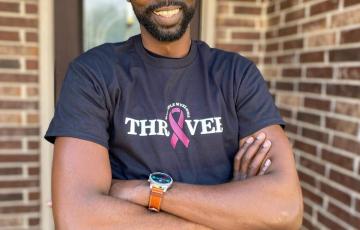
Damion
In 2020, at the age of 36, I was diagnosed with multiple myeloma (MM). To say this was out of left field would be an understatement. Historically, MM has been recognized as a blood cancer that impacts older patients. That research may be changing. Also, MM disproportionally affects African Americans. At the time of my diagnosis, I was a pretty healthy guy. I tried to eat right and even played in two basketball leagues each week. When I went to the doctor with stomach issues, I wasn't expecting to leave with a cancer diagnosis.
Side Effects
Both cancer therapy and acute myeloid leukemia (AML) can produce side effects. For most patients, side effects are temporary and subside once the body adjusts to therapy or when therapy is completed. For other patients, side effects can be more severe, sometimes requiring hospitalization. The side effects of chemotherapy may vary, depending on the drugs used and the overall health of the patient.
Before you undergo treatment, talk with your doctor about potential side effects. Medication and other therapies can prevent or manage many side effects.
Targeted Therapy
Targeted therapy is a type of treatment that uses drugs or other substances to identify and attack specific types of cancer cells with less harm to normal cells. Not all cancers have the same targets. Each type of targeted therapy works a little bit differently, but they all interfere with the growth and survival of cancer cells. To find the most effective treatment, your doctor may run tests to identify the genes, proteins and other factors in your cancer cells. This helps the doctor choose the most effective treatment for you based on the specific factors of your disease.
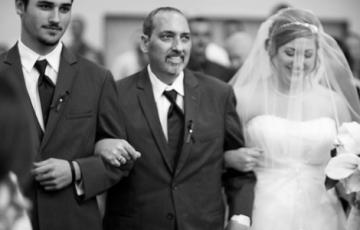
Mark
At the age of 18, my dad, Mark Brightbill, was diagnosed with Stage 3 Hodgkin lymphoma and underwent chemo and radiation. The Tuesday after my now husband and I got engaged, he was diagnosed with nodular LP Hodgkin lymphoma (after 30 years in remission).

Michele
I was recently diagnosed with chronic lymphocytic leukemia (CLL). My mom passed away from pulmonary fibrosis right before Thanksgiving 2022. She never smoked and had none of the risk factors that led to that type of disease. So, I thought I would get a physical to make sure I was healthy. I have a 2½-year-old daughter, and I am an older mom, so I figured I should make sure my lungs were healthy. I didn't even have a primary care physician, so I asked my good friends for a recommendation.
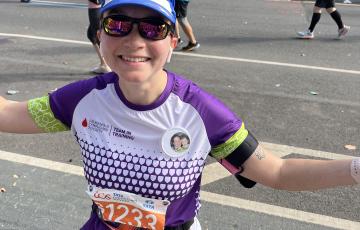
Katharine
My mother, Nancy, was diagnosed with acute myeloid leukemia (AML) with a FLT3 mutation in March 2022. Over the next year and a half, she went through multiple rounds and regimens of inpatient and outpatient chemotherapy. At every step along the way, every member of my mom's care team kept mentioning how the outlook for patients like my mom was so much better now than it had been even 10 years ago thanks to advances in medicine.
Stem Cell Transplantation
The goal of stem cell transplantation is to cure the patient’s cancer by destroying the cancer cells in the bone marrow with high doses of chemotherapy and then replacing them with new, healthy blood-forming stem cells. The healthy blood stem cells will grow and multiply forming new bone marrow and blood cells. There are two main types of stem cell transplantation. They are
Rachel
My name is Rachel. My tribal affiliation is full-blood Chickasaw/Creek/Seminole. I am 19 years old and will be entering my second year at the University of Oklahoma in Norman, Oklahoma. I attended Little Axe Schools from Kindergarten to my senior year of high school. Little Axe is a rural community school outside of Norman, Oklahoma. My parents are both full-blood Natives, and I have an older brother (25) and a younger brother (16). My older brother, Caleb, is a state trooper for the State of Oklahoma. My younger brother, Andrew, will be starting the 10th grade at Little Axe High School.
Julie
March 22, 2020- 7 years since acute myeloid leukemia (AML) diagnosis, CURED!!! I am so blessed to be alive to celebrate my 7th year since diagnosis of AML! Who celebrates being diagnosed with AML or any cancer for that matter? But let’s be honest, in the cancer lottery, AML, is not one of the preferred. At least if you cling to cancer stats which is something I highly discourage. The first problem with AML stats specifically-the mean DX age of 68ish.
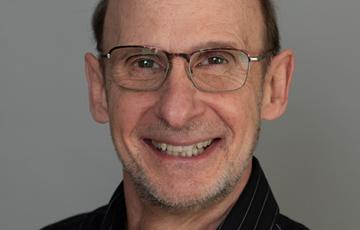
Steve
In June of 2016, I went to my primary care physician for a routine physical. Lab work revealed an abnormally low white blood cell count, triggering a bone marrow biopsy that found acute myeloid leukemia. In 48 hours, I went from feeling perfectly fine to a week-long, 24/7, chemotherapy cocktail. That was followed by four more weeks in the hospital to treat the inevitable infections and side effects of chemotherapy induced immunosuppression. I quickly learned that the rest of life doesn’t stop just because we’re sick.
Who's Who on Your Healthcare Team
A number of healthcare professionals are involved with your care. Your team may include:
Facts and Statistics Overview
Leukemia, lymphoma, myeloma, myelodysplastic syndromes (MDS), and myeloproliferative neoplasms (MPNs) are types of cancer that can affect the bone marrow, the blood cells, the lymph nodes, and other parts of the lymphatic system.
Click on the links below to view statistics about each disease: